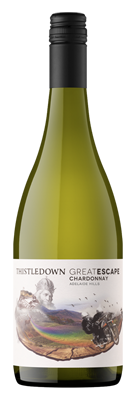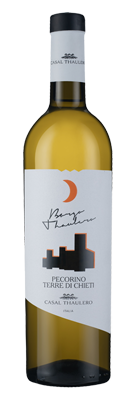Filter by
- Vibrant, fresh peach and citrus Pinot Gris, made just for you by a big name from Barossa!$28.00 RRPfrom $19.99 when you mix 12+
- Small batch Pinot Grigio made by the master himself – Ben Riggs!$25.00 RRPfrom $19.99 when you mix 12+
- Fresh and very easy to drink Chardonnay exclusive from a big Barossa name.$28.00 RRPfrom $19.99 when you mix 12+
- Fresh, zesty 92pt Sauvignon Blanc from celebrated Adelaide Hills vineyard Longview.$27.00 RRPfrom $21.99 when you mix 12+
- A “captivating” Gold-winning, 93pt Grigio that “strikes just the right balance…” (Ray Jordan)$40.00 RRPfrom $24.99 when you mix 12+
- 91pt Adelaide Hills Picpoul 'refreshing & pure', with a saline minerality along with its fresh fruit$26.00 RRPfrom $22.99 when you mix 12+
- Meet Ms Sauvignon, a chic global icon making a splash in the Adelaide Hills.$28.00 RRPfrom $18.99 when you mix 12+
- Small batch Adelaide Hills Pinot Grigio made by the vastly experienced Ben Riggs.$25.00 RRPfrom $19.99 when you mix 12+
- A crisp 91pt Chardonnay from the cool climate Adelaide Hills, showing great balance and composure.$34.00 RRPfrom $29.99 when you mix 12+
- The Adelaide Hills are alive with the taste of Riesling!$33.00 RRPfrom $28.99 when you mix 12+
- Super-fresh, 92pt modern-style of Chardonnay from elevated sites.$32.00 RRPfrom $29.50 when you mix 12+
- Fresh Adelaide Hills Chardonnay from cricket legend Ricky Ponting and winemaker Ben Riggs.$25.00 RRPfrom $24.99 when you mix 12+
- $28.00 RRPfrom $19.99 when you mix 12+
- Adelaide Hills Sauvignon from Tim Knappstein – varietally bang on, with scores of 90, 92 and 93pts,$24.00 RRPfrom $18.99 when you mix 12+
- Showing (1 to 14 of 14)
1
Page 1 of 1
How is white wine made?
White wine is usually made from white grapes, though some varieties can also use red grapes. The grapes are harvested when they reach the right level of ripeness. The timing of the harvest can influence the wine’s final taste. The grapes are then crushed and pressed to separate the juice from the skins, seeds, and stems, as these can colour the wine. Unlike red wine, white wine is made by fermenting just the grape juice. Yeast is then added to the juice, which converts the natural sugars in the juice into alcohol.
After fermentation, the wine may be aged in oak barrels or stainless-steel tanks. Ageing can last a few months to several years, depending on the desired taste. Oak ageing imparts richer, nuttier flavours into the wine, while steel allows the fruits’ natural flavours to shine.
What is dry white wine?
Dry white wines have little to no residual sugar, so it’s not sweet. Most of the grape’s sugars become alcohol during fermentation, producing a crisp and invigorating wine.
Depending on the grape variety and how the wine is made, dry white wines have a range of flavours and aromas. You can expect citrus notes with aromas of herbs, florals, fruits and minerals. Enjoy a glass of dry white wine on its own or pair it with seafood, salads and light pasta dishes.
Popular examples of dry white wines include Sauvignon Blanc, Pinot Grigio, and Chardonnay.
What is sweet white wine?
Sweet white wine is a type of white wine that contains more residual sugar after fermentation. The residual sugar can provide a pleasant sweetness and richness, balancing the wine’s acidity.
The sweetness in these wines can vary, ranging from slightly off-dry to fully sweet or even dessert-style wines. Sweet white wines have a range of flavours, from fruity and floral to honeyed and tropical. Pair with desserts or enjoy as an aperitif or a stand-alone treat for those who appreciate a sweeter taste profile.
If you’re looking for a sweet white wine, Sauternes and a sweet style Riesling are perfect choices.
What are the types and styles of white wine?
Each white wine grape variety has signature characteristics that affect the wine’s taste and style. Popular white grape varieties include:
- Riesling: Usually on the sweet side, Riesling has a floral and fruity aroma. You’ll pick up flavours such as apple, peach, citrus and honey. But if you prefer your wine dry, there are Riesling options for you as well.
- Pinot Grigio: If you’re after a dry white wine with a touch of zing, Pinot Grigio is a good shout. It’s packed with fruity flavours such as apple, lemon, lime, pear and white nectarine, and sometimes you might even notice a hint of honeysuckle.
- Chardonnay: Chardonnay’s a real chameleon with a wide variety of flavours. You could get tropical fruits, citrus, vanilla, butter and oak. It’s a food-friendly white wine that goes well with many different dishes, from seafood to creamy pastas and risotto.
- Chenin Blanc: A versatile white wine that ranges from dry to sweet, with lively acidity and flavours of apricot and honey. It’s best known for its ability to age well, and it develops complex flavours over time.
- Viognier: Medium- to full-bodied with rich floral aromas, Viognier offers elegant notes of apricot, peach and vanilla. It’s often praised for its complexity, with hints of spice and tropical fruit adding to its allure.
- Sauvignon Blanc: Typically crisp and refreshing, Sauvignon Blanc offers vibrant acidity and flavours of citrus, green apple and herbal notes. It can range from dry to slightly sweet in taste and is light- to medium-bodied.
- Semillon: Semillon is a moderately acidic wine with a smooth, creamy texture. It starts off with fresh apple and citrus notes, but as it ages, you’ll get more complex flavours of honey, figs, and toasted nuts.
- White wine blends: Featuring a range of complex flavours, from herbal to tropical fruit notes, white wine blends can differ in sweetness. They can be light- to full-bodied with various flavours to suit every taste.
What are the most famous white wine blends?
White wine blends combine two or more grape varieties, each contributing its own characteristics to the wine. Each blend offers a diverse range of taste experiences for wine lovers. Some of the most popular and well-known white wine blends include:
- Champagne: This world-famous sparkling wine blend from France’s Champagne region is typically a mix of Chardonnay, and red Pinot Noir and Pinot Meunier grapes. The resulting wines are known for their bubbly effervescence and complex flavours.
- Bordeaux Blanc: This blend from Bordeaux, France, typically combines Sauvignon Blanc, Sémillon, and sometimes Muscadelle for a versatile range of flavours, from zesty citrus to tropical fruits.
- White Burgundy: This blend from Burgundy, France, is typically a mix of Chardonnay and Aligoté grapes, producing rich, complex and full-bodied wines.
- White Rhone Blend: Originating in Rhone, France, this blend often combines Marsanne, Roussanne, and Viognier grapes for a full-bodied and aromatic wine with fruity and floral notes.
- Sauternes: Another Bordeaux blend, Sauternes combines Sémillon, Sauvignon Blanc, and Muscadelle grapes, creating a lusciously sweet, honeyed dessert wine.
- White Rioja: From Rioja, Spain, this blend often combines Viura, Malvasia and Garnacha Blanca grapes. It ranges from fresh and crisp to rich and nutty, depending on the ageing process.
Australian winemakers are masters of experimenting with different grape varieties to create bold and complex white wine blends. Popular blends include:
- Semillon-Sauvignon Blanc: A crisp, refreshing wine that combines the citrus and grassy notes of Sauvignon Blanc with the fuller-bodied, apple and honey flavours of Semillon.
- Chardonnay-Semillon: This wine combines the rich, creamy and fruity flavours of Chardonnay with the aromatic and full-bodied character of Semillon. It’s a versatile blend that ranges from crisp and refreshing to rich and complex.
- Riesling-Gewurztraminer: This blend is less common but offers a delightful balance of Riesling’s citrus and mineral characteristics with Gewurztraminer’s intense floral and spicy notes.
- Marsanne-Roussanne-Viognier: Marsanne brings structure and honeyed notes to this blend, while Roussanne adds complexity and savoury flavours, and Viognier contributes floral aromas and body.
How do I serve white wine?
Most white wines should be served chilled. Light-bodied and aromatic wines, such as Sauvignon Blanc, are best served between 9-11°C. Medium- to full-bodied wines, like Chardonnay, can be served slightly warmer (10-13°C). Avoid serving white wines too cold, or you risk dulling the aromas and flavours.
Most white wines can be poured directly from the bottle, although some fuller-bodied whites, such as aged Chardonnays, can benefit from decanting. This allows the wine to breathe and any harsh notes to soften.
Serve in a white wine glass with a narrower bowl and a tapered rim to concentrate the aromas towards the nose. Avoid warming the wine with your hands by holding the glass by its stem.
When choosing a white wine to accompany dishes, consider the flavours and intensity of the wine. Light-bodied white wines pair well with lighter dishes, such as salads, seafood, and fresh cheeses. Fuller-bodied whites are better suited to richer dishes, such as creamy pastas or roasted meats.
How do I store white wine?
White wine should be stored properly to maintain the quality and longevity of the wine. Keep it in a cool, dark environment with a temperature range of 9-13°C. Avoid exposing your wine to direct sunlight, as this can affect the character of your wine. To prevent the corks from drying out and air from entering the bottle, aim for a humidity level of 60-70%.
Keep your wine bottles away from vibrations, which may cause the wine to age prematurely. Consider investing in a wine fridge that provides optimal conditions and temperature control.
How long does white wine last after opening?
Once opened, white wines should be re-sealed and kept in the fridge. This will typically make the wine last a few days.
- Light-bodied wines – Up to 3 days.
- Medium- to full-bodied wines – Can last between 3 and 5 days.
- Sweet wines – Can last between 7 and 10 days.




















